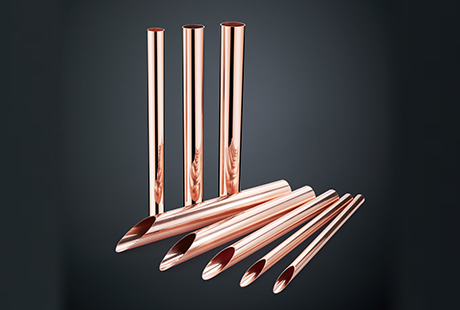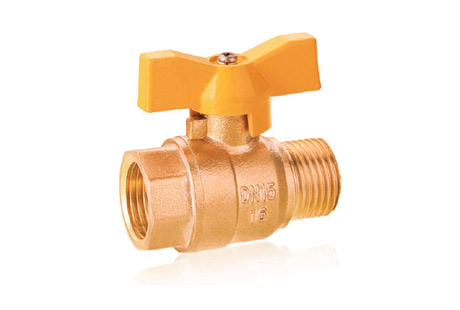Enameled wire, a primary variety of winding wire, is composed of a conductor and an insulating layer. Currently available on the market, enameled wire is mainly produced by annealing the bare wire to soften it, followed by multiple coatings of enamel and baking. Influenced by factors such as raw material quality, process parameters, production equipment, and the environment, various enameled wires exhibit different quality characteristics. However, they all possess four major properties: mechanical, chemical, electrical, and thermal.
Most enameled wires on the current market have a circular cross-section. However, circular enameled wire faces the challenge of a low slot fill factor after winding. This significantly limits the effectiveness of corresponding electrical components. Typically, the slot fill rate of fully wound enameled round wire is about 78%, making it difficult to meet the technological requirements for component flattening, lightweighting, low power consumption, and high performance. With technological advancements, flat enameled wire has emerged.
Jintian Copper's enameled wire boasts significant advantages such as strong corona resistance, low pinholes, high mechanical strength of the insulating layer, high temperature resistance, corrosion resistance, low friction coefficient, and resistance to ATF oil. It has extensive application prospects in the field of new energy vehicles and is favored by many vehicle manufacturers and supporting companies in the industry.
Enameled copper flat wire, a type of enameled wire, is made by drawing, extrusion, or rolling oxygen-free copper or electrical aluminum rods through a specific mold, followed by multiple coatings of insulating enamel. The thickness ranges from 0.025mm to 2mm, and the width is generally less than 5mm, with a width-to-thickness ratio ranging from 2:1 to 50:1. Flat enameled wire finds widespread applications, especially in the winding of various electrical devices such as telecommunications equipment, transformers, electric motors, and generators.
Characteristics of flat enameled wire include:
Occupies Smaller Volume: Flat enameled wire occupies less space in coils, saving approximately 9-12% of space. This results in smaller electronic and electrical products, with less impact on coil volume, thereby saving more materials.
Higher Slot Fill Factor: Under the same winding space conditions, the slot fill factor of flat enameled wire can exceed 95%, solving the long-standing problem of coil performance improvement. This leads to lower resistance, larger capacitance, meeting the requirements of large-capacity high-load applications.
Larger Cross-Sectional Area: Compared to enameled round wire, flat enameled wire has a larger cross-sectional area, leading to an increased heat dissipation area. This significantly improves heat dissipation effects and can reduce the "skin effect" (where alternating current concentrates on the surface of the conductor) and lower high-frequency motor losses.
Due to copper's significant advantage in conductivity, flat enameled wire is generally made of copper, known as flat enameled copper wire. To meet different performance requirements, adjustments can be made to flat enameled copper wire, such as ultra-narrow and ultra-thin wires for components requiring high flatness and light weight, high-precision wires for components with low power consumption and high performance requirements, high-toughness wires for components requiring high impact resistance, and durable wires for components with high service life requirements.
In new energy vehicle motors, where electromagnetic wires play a crucial role, the use of flat enameled wire provides several advantages. Compared to conventional round enameled wire windings, flat enameled wire windings, under the same volume, offer higher energy density, higher motor efficiency, corona resistance, high insulation strength, zero pinholes, and a smooth surface. It can replace ordinary round enameled wire in new energy vehicle motors.
Using flat enameled wire instead of round enameled wire theoretically increases the filled copper by 20-30% under constant space. The stator of a flat enameled wire winding can improve the slot fill rate by 20%, meaning that, under constant motor space, the maximum current the motor winding can pass can increase by about 15%. This is equivalent to increasing the maximum torque and motor power by 15%. Conversely, at the same power level, it can reduce the motor's outer diameter and volume, thereby reducing the use of other materials in the motor.
Jintian Copper, a wholly-owned subsidiary of Ningbo Jintian Copper, is an advanced enameled wire production base in China. It focuses on the research and development, as well as the production of high-precision electromagnetic wire series products. The division has received honors such as "Zhejiang Province's Trusted Quality Product" and "China's Top Ten Well-Known Enameled Wire Brands."
The company's products include corona-resistant enameled copper round (flat) wire, polyester-imide/polyamide-imide composite enameled copper round (flat) wire, and direct-weldable polyurethane enameled copper round wire. These products comply with the EU's ROHS directive requirements, with key products passing UL safety certification. They are widely used in industries such as automobiles, motors, transformers, compressors, and even in new energy vehicles, rail transportation, wind power, and more, being exported to over 30 countries and regions, including Japan, Europe, and the Americas.

 English
English 日本語
日本語 한국어
한국어 français
français Deutsch
Deutsch Español
Español italiano
italiano العربية
العربية tiếng việt
tiếng việt Türkçe
Türkçe ไทย
ไทย 中文
中文





